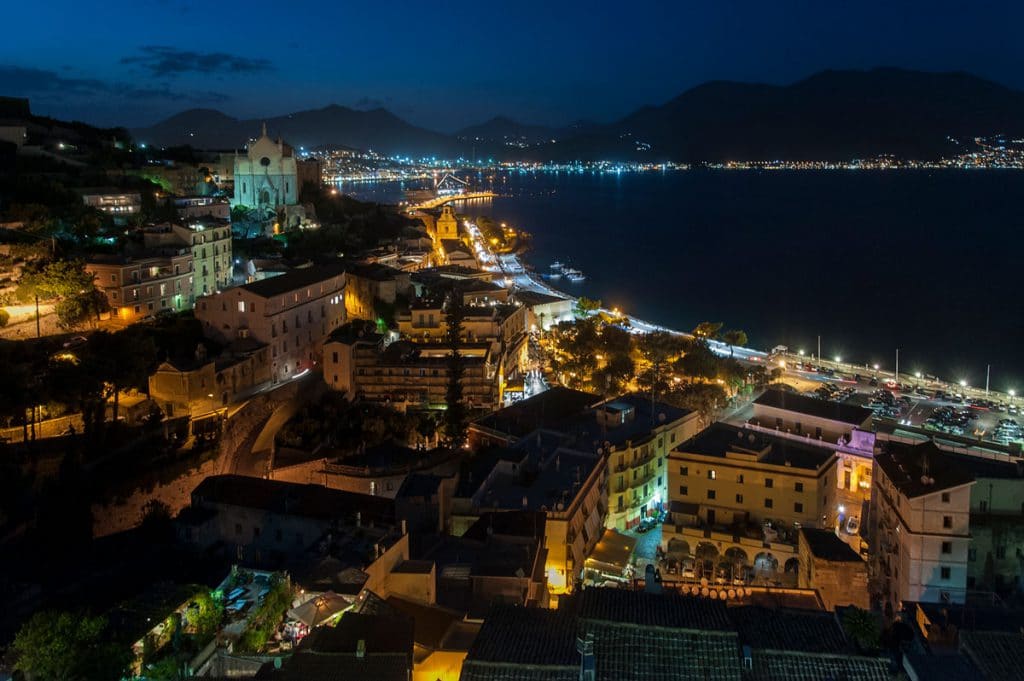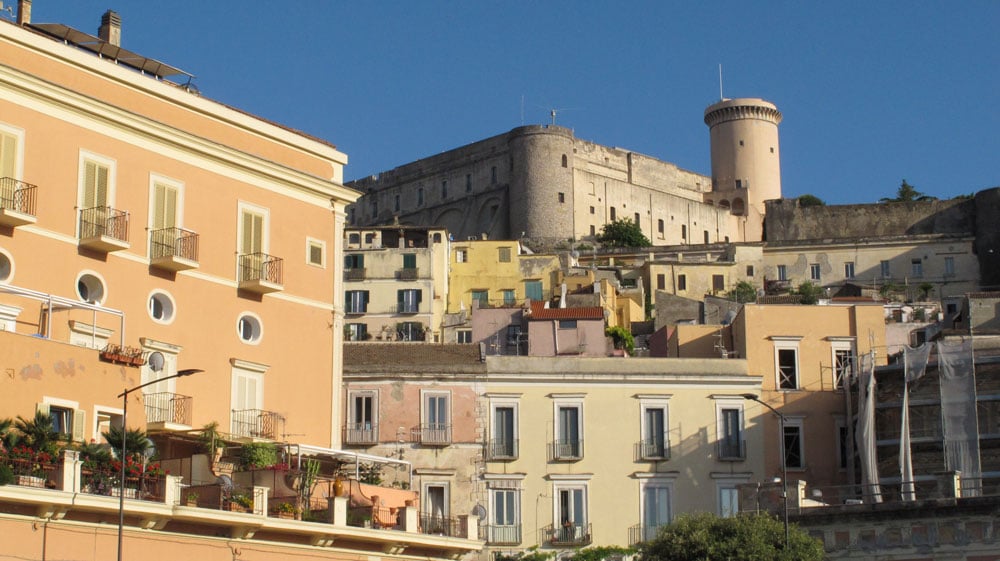Gaeta is a city rich in spiritualitythat is revealed in the many churches located throughout the country. The Pearl of the Tyrrhenian Sea, in fact, is also known as the city of a hundred churches. In realtà se ne contano poco più della metà – secondo una delle ricerche più complete sarebbero 56 – che danno vita a un itinerario mistico tutto da scoprire.
Surely the most famous churches of Gaeta are the SS Annunziata, the imposing Temple of San Francesco and the cathedral basilica of Saints Erasmus and Marciano, all three located in the medieval village.
The church of SS Annunziata
Our virtual walk, which winds along the places of sacredness, begins from the church of the SS Annunziata, the first church that you meet coming from the center.
When it was founded in 1320 it was located close to the sea, outside the walls that surrounded the city. But in 1536 it was demolished almost completely for the construction of the ramparts, then demolished. What is striking about the church of the Annunziata is the union of two antithetical styles: the architectural austerity typical of the Gothic is linked with the bombacness of the interior decorations in baroque style, creating a very interesting combination for those who visit it for the first time. But the real jewel of this church is the chapel of the Immaculate Conception, also called the Golden Chapelfor the pure gold finishes of the chests of drawers that make up the barrel vault. The walls are adorned with 18 canvases, works by Criscuolo and his students, while on the altar stands the painting of the Immaculate Conception by the artist Scipione Pulzone.
The cathedral basilica of Saints Erasmus and Marcian
Arrived in the beating heart of the medieval village we find the cathedral of Gaeta dei Santi Erasmo e Marciano. Entering the basilica the glance is exceptional. The restoration of 2014 brought to light several finds such as the Roman columns dating back to the medieval construction, while the colorful marbles of the central nave outline the path to the altar. Here too, the crypt below is an excellent example of Baroque art dominated by polychrome marbles inlarated in the walls. In the succorpo are kept the relics of the two saints to whom the cathedral is dedicated.
IInevitable, finally, is the visit to the bell tower in Romanesquestyle with strong Arab-Norman influence, located behind the cathedral. The massive base was made with material from the mausoleum of Lucius Munazio Planco on which it is possible to see some epigraphs concerning the Roman consul.
The temple of St. Dominic and the Holy Land
The walk to discover the most fascinating sacred places of Gaeta continues towards the upper part, where you can admire the magnificent gulf in all its vastness. These climbs preserve examples of sacred architecture often overshadowed by the fame of the most famous churches. This is demonstrated by the church of San Domenico whose construction dates back to the mid-fifteenth century. The structure has two unequal naves that take up the late Gothic style. Stripped of ornaments, the church shows all its rigor already in the façade characterized by a monumental portal of the fourteenth century.
The structure below preserves a fascinating place, a crypt located under the sacristy of the church, called the Holy Land because the priests who were part of the confraternity of the Holy Rosary were buried there. Here are exposed over seventy skulls, some of which have a metal plate in the shape of a cross on the front, a sign that these remains belonged to the ecclesiasts. A find that still arouses curiosity is that of a wooden case on which there is an epigraph of 1861 that refers to the mummy of a child, now disappeared.
The temple of St. Francis
To reign over the medieval village for its preeminent position there is the imposing temple of San Francesco, built in honor of St. Francis of Assisi who lived in Gaeta in 1222.
To leave you breathless is the statue, representation of Religion, which stands in the center of the monumental staircase and looks towards the ancient village. Today the church is in neo-Gothic style with the façade that shows the statues of Charles II of Anjou and Ferdinand II on the sides of the portal, in honor of the two sovereigns who engaged in the reconstruction and restoration of the sacred building, as evidenced by the epigraphs below. Inside the temple has three naves: the central one is enriched with plaster statues of the Apostles, while the side aisles end with polychrome marble altars.
These are just a few churches in Gaeta to visit during your stay.
If you are planning to spend a holiday in Gaeta, A casa di Monachella is the guest house in Serapo where you can spend unforgettable moments! On the site you can find the apartments and rooms furnished in the colors of the sea and equipped with all the necessary comforts for a perfect stay!





